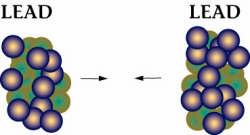
 |
Lead-ions smash together head-on. |
| The energy at the moment of impact will be high enough to make heavy particles called J-psi, whose fate will depend on what happens next. We'll come back to them later. | 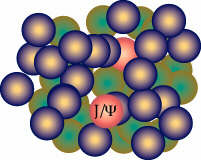 |
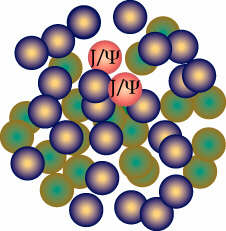 |
The protons and neutrons in the lead-ions will split up, forming a dense soup of particles. |
| If the energy is high enough, even the quarks and gluons normally locked up inside the protons and neutrons will break out, and a QGP will have been formed. If this happens, some J-psis will be destroyed, but other particles, strange quarks will be made. Particles which go on to decay into electron pairs will also form more easily. | 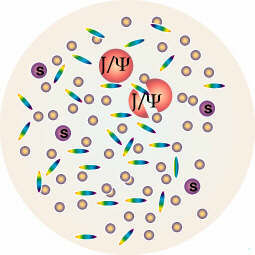 |
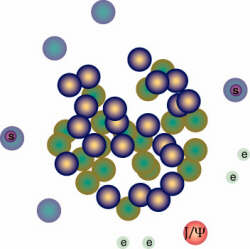 |
As the QGP cools down, ordinary matter condenses out, rather like water condensing from steam. By measuring how many J-psis, how many strange quark containing particles, and how many electron pairs emerge from the collision, researchers are able to tell whether a QGP has formed, and learn about how it evolved. So far, the evidence suggests that QGP has been made, but detailed studies at CERN will probably have to wait for the LHC. |
© Copyright CERN - Last modified on 1998-03-27 - tradotto da Sofia Sabatti